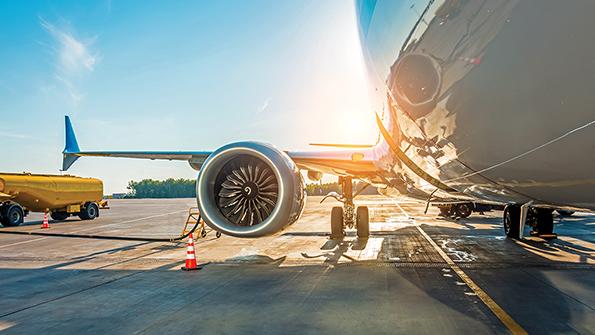Opinion: Leave Hydrogen For Dirigibles

Aviation needs to clean up its climate act—fast. In 2008, aviation leaders committed to reducing CO2 emissions by the year 2050 to half of their 2005 levels. Now some are even talking about carbon-free flight. Better airplanes, airports and operations are important but by no means sufficient to meet these goals. The foundation of such a dramatic change must be built on moving from fossil fuels to low- or no-carbon energy. Its technology and infrastructure must be capable of powering single- and twin-aisle airliners flying long distances, since they are responsible for well over 90% of aviation’s CO2. This energy and the airplanes that use it must be widely deployed before 2050.
The low-carbon challenge includes the source of the energy and how it is stored on the airplane. Storage can be either as electric energy stored in batteries or as a liquid fuel stored in tanks. Battery power has been much studied in the last decade, with the generally accepted conclusion that it is and will continue to be incapable of powering large airliners in this time frame. That leaves liquid fuels.
Sustainable alternative jet fuels (SAJF) are synthetic hydrocarbons, drop-in-compatible with existing aircraft and fuel-distribution systems. Several are certified and in limited use. Their manufacturing processes vary, and feedstocks include sustainable agriculture, waste and even, with electric power, just water and air (electrofuels). The most favorable process in terms of CO2 benefit and cost can vary with geography.
Lately, there has been much press on hydrogen (H2) as a universal solution to greening. This is a less-than-compelling response to aviation’s challenges. Almost all of today’s hydrogen is made from natural gas or coal, so it is not in any way green. Much of the enthusiasm for H2 presupposes that it will be made with green electricity, much of it excess. The energy in the jet fuel consumed in 2019 was equivalent to about 14% of the world’s electricity, so a considerable added capacity would be needed.
Airliners will require liquid hydrogen (LH2). With current technology, producing and liquefying hydrogen with electricity costs about 50% of the input energy. The vast infrastructure needed to generate the power and then produce, liquefy and distribute the hydrogen to airports and aircraft at the scale needed will cost several trillion dollars, so this will not be cheap fuel. Also, the existing fleet will need to be replaced with airliners that can fly on hydrogen. Is this the wisest investment the world can make to fight climate change?
The airplane side of the question is also problematic. Liquid hydrogen requires fuel tanks that are about three times larger than those for jet fuel. Since the LH2 must be kept at -240°C (-400°F), heat leakage is very important, so highly insulated spherical or compact cylindrical tanks are needed, significantly increasing airplane volume and drag.
Aircraft configurations published to date show these tanks filling the fuselage ahead, behind or even in lobes above the passenger cabin. Surrounding passengers with thousands of gallons of super-chilled, highly flammable LH2 is unacceptable from a safety perspective. Arriving at a design that doesn’t compromise safety will be a major challenge.
Powering hydrogen-fueled aircraft is less challenging, since gas turbines can be readily designed for hydrogen. Enthusiasm in the literature for fuel cells isn’t appropriate for airliners because current engines are more efficient and much, much lighter than fuel-cell systems capable of operating at the flight altitudes and speeds needed. The engine efficiency of general aviation and small commuter aircraft is less than half of an airliner’s, so gaseous-hydrogen-powered fuel cells might make sense there, assuming green hydrogen is available. But SAJFs also provide a green alternative for small aircraft, as might advanced batteries on short routes.
Overall, the vision of hydrogen-fueled aviation is inconsistent with the reality of the looming 2050 need. An aviation-size, worldwide hydrogen supply and airliners capable of using it are decades and trillions of dollars away. In terms of a timely green return on investment, the money would be much better spent on SAJF, both for capital investments in capacity and for technologies that improve yields and reduce costs. As for hydrogen and aviation, let’s leave that for dirigibles.
—Alan H. Epstein is the R.C. Maclaurin professor emeritus at the Massachusetts Institute of Technology.

Comments
Hard to transport in aircraft.
Processed McDo's used cooking oil in more efficient open rotor might be better
SAJFs - all of them - are a pathetic waste of money, time and energy.
Literally, in the case of energy waste.
This is yet another call for commercial aviation doing nothing towards its absolute dependency on fossil energy.
The position of commercial aviation is unreally irresponsible: this is the spec for the fuel I have been using since day one. Give me something equal to it, a drop-in fuel, costing no more than fossil jet fuel.
Preferably cheaper. Not happening.
Aero hydrogen will not be left to dirigibles.
Equally Hydrogen can be cracked from water, just because its oil or gas now does not mean we are stuck with it out of that form (extraction of oil and gas has its issues)
But what cracks the media? Electricity. So it needs a full reckoning as to what the real costs are environmentally, not a look at the tree.
Make aviation as clean as you can and put the effort into higher return areas that compensate. There is no such thing as perfection.